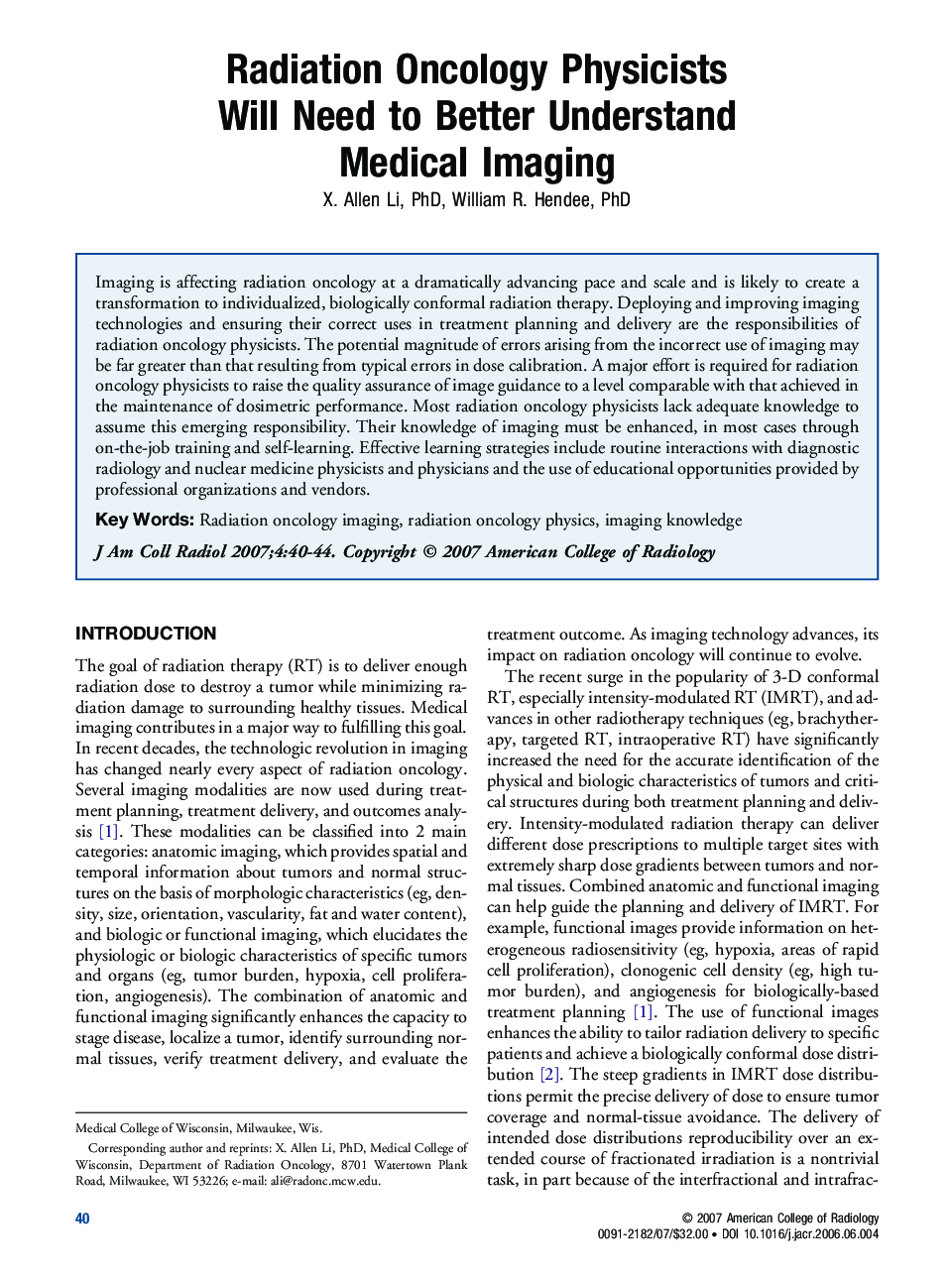| Article ID | Journal | Published Year | Pages | File Type |
|---|---|---|---|---|
| 4231976 | Journal of the American College of Radiology | 2007 | 5 Pages |
Abstract
Imaging is affecting radiation oncology at a dramatically advancing pace and scale and is likely to create a transformation to individualized, biologically conformal radiation therapy. Deploying and improving imaging technologies and ensuring their correct uses in treatment planning and delivery are the responsibilities of radiation oncology physicists. The potential magnitude of errors arising from the incorrect use of imaging may be far greater than that resulting from typical errors in dose calibration. A major effort is required for radiation oncology physicists to raise the quality assurance of image guidance to a level comparable with that achieved in the maintenance of dosimetric performance. Most radiation oncology physicists lack adequate knowledge to assume this emerging responsibility. Their knowledge of imaging must be enhanced, in most cases through on-the-job training and self-learning. Effective learning strategies include routine interactions with diagnostic radiology and nuclear medicine physicists and physicians and the use of educational opportunities provided by professional organizations and vendors.
Related Topics
Health Sciences
Medicine and Dentistry
Radiology and Imaging
Authors
X. Allen PhD, William R. PhD,
